What is a Jet Boat?
The first question that comes to comes to some people’s minds when they hear the term Jet Boat might be “Is that like a big jet ski?” The answer to that question is: A little yes, but mostly NO. Obviously there is one big similarity in that they both use “jet propulsion.” And that is pretty much where the similarities between jet boats and jet skis end.
What is Jet Propulsion?
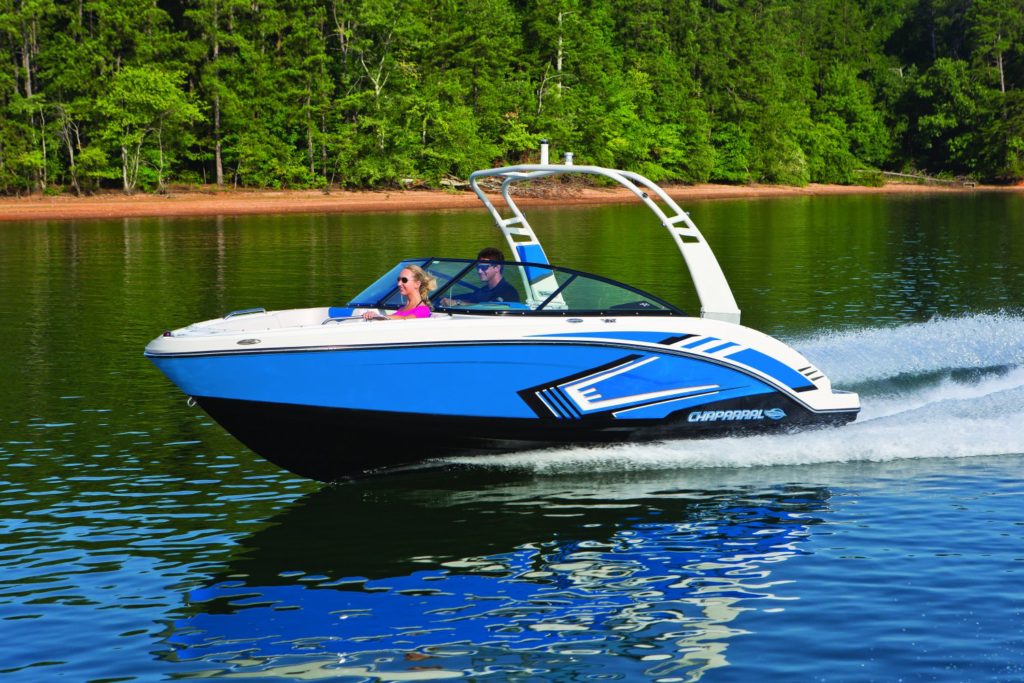
Although Jet Boats have recently been one of the quickest growing segments in the marine industry, the first jet boat was designed in the 1950’s. The concept is simple: Water is sucked up from underneath the boat through an intake and shot out the back through a nozzle. There is typically a pump or impeller just behind the intake which sucks the water in and pushes it out the back.
The big difference between a Jet Boat and traditional Stern Drive or Outboard powered boat is that there is not an external propeller on a Jet Boat. This has several advantages in and of itself. More on that later.
Jet Boat Variations
If you are familiar with personal watercraft, or jet skis, you probably have realized that most of them are very similar in style and size. Currently, most personal watercraft are approximately 8′-12′ in length. They feature a set of handlebars and a seat for the rider(s) to sit back-to-back while operating the craft. They are typically rated for 2-3 passengers and have jet engines ranging in horsepower from 80-350. Their light weight makes them perform essentially like a motorcycle on the water.
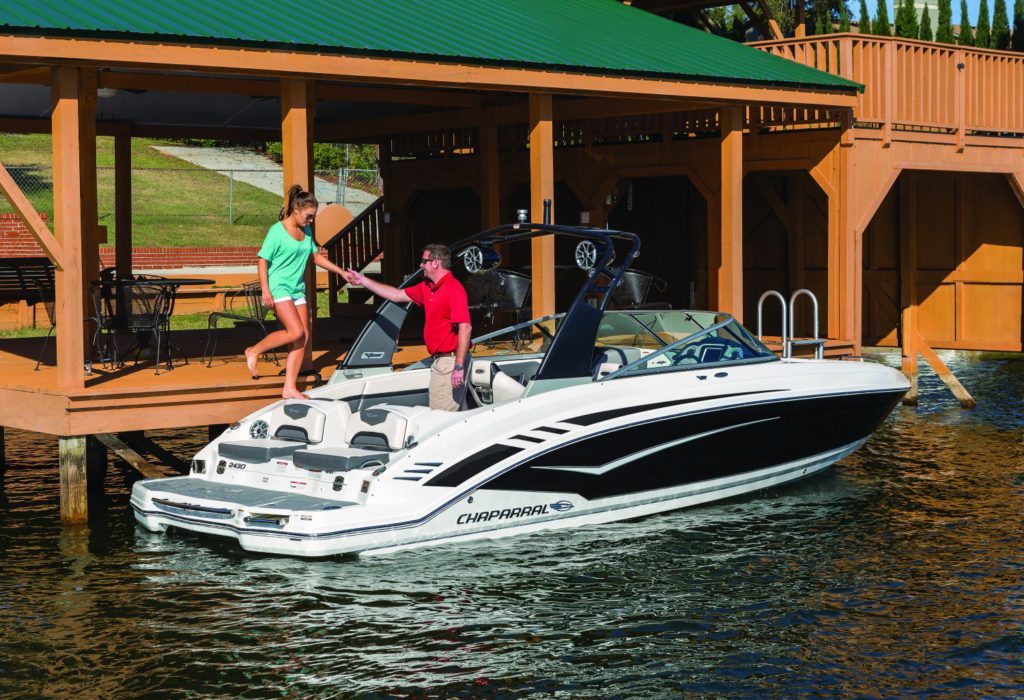
A jet boat, on the other hand, is much more similar to a traditional fiberglass runabout. In 2018, most jet boats range in size from 16′-24′. The smaller jet boats under 20′ in length typically have 1 engine. The larger jet boats will usually have twin engines. Some 24′ jet boats on the market today, such as the Chaparral Vortex 2430 VRX, will have twin high performance engines which produce a total of 500hp.
Advantages of Jet Boats
There are several main advantages Jet Boats have over traditional stern drives. Depending on how and where you intend to do your boating, any of these could advantages could be enough to make you choose a jet boat over a traditional stern drive.
Shallow Draft:
A jet boat does not have an outdrive or prop/driveshaft, so there is typically nothing hanging down below the boat. This means you could potentially operate a jet boat in as little as 12” of water or less (not that we would recommend that.) If you boat on a lake that is shallow or has stumps, this could make a jet boat a great option for you.
Interior Space:
If you take a look at some of the modern day jet boats, you will notice right away that the amount of room inside the cockpit is significantly larger than what you will get in a stern drive. This is because of how the jet motors sit in the boat. They sit lower and further back. They don’t require a large sunpad over the top and are able to extend the cockpit area 12-18” longer than a similar sized stern drive. This means you could potentially get the interior room of a 24’ stern drive in a smaller 22’ jet boat.
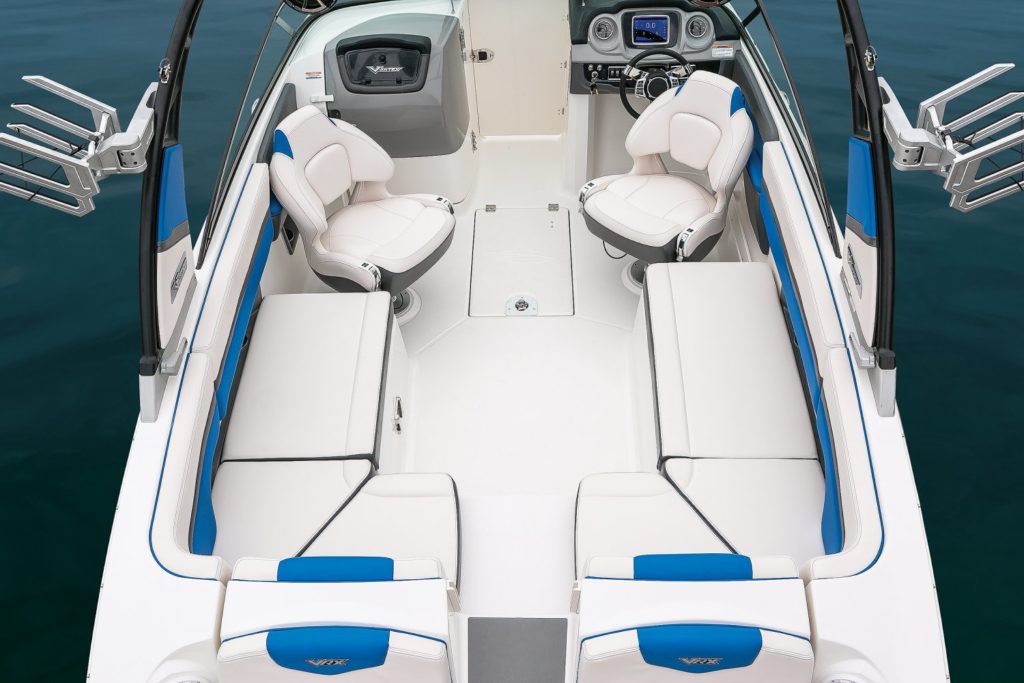
Performance:
Jet boats have the ability to perform in ways that a stern drive couldn’t dream of. Jet boats have extremely quick acceleration and unmatched turning ability. They can also have great top-speed depending on their engine setup and horsepower rating.
Safety:
Jet boats do not have an exterior propeller. This means that there is no longer the risk of accidents related to the spinning prop. First of all, you should never have anyone in the water around the prop when a boat is running so this shouldn’t really be an issue. Even without the motor running the prop and outdrive can get in the way when swimming or diving. On a jet boat, there is absolutely nothing exposed behind the boat. This makes a jet boat an appealing option to parents with small children.
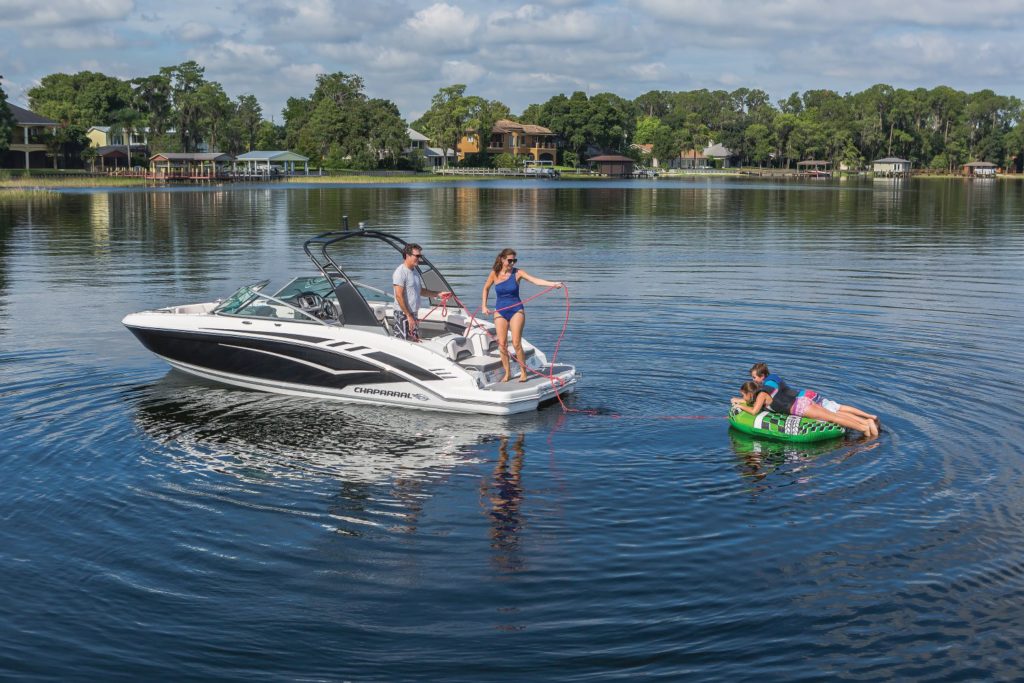
Watersports:
This is somewhat related to the safety advantage. The fact that a jet boat does not have a prop sticking out behind the boat opens up the possibility of “wakesurfing.” Wakesurfing is a fairly new trend in the watersports world, and it is now taking over as the most popular watersports activity over skiing and wakeboarding. This involves using the wake behind the boat to push a small surfboard you are standing on without using a rope. It is typically done very close to the back of the boat, which is why it is not safe if the boat has an exposed prop & outdrive. Wakesurfing can only be done safely behind a jet boat, inboard boat, or with the new Volvo FFD.
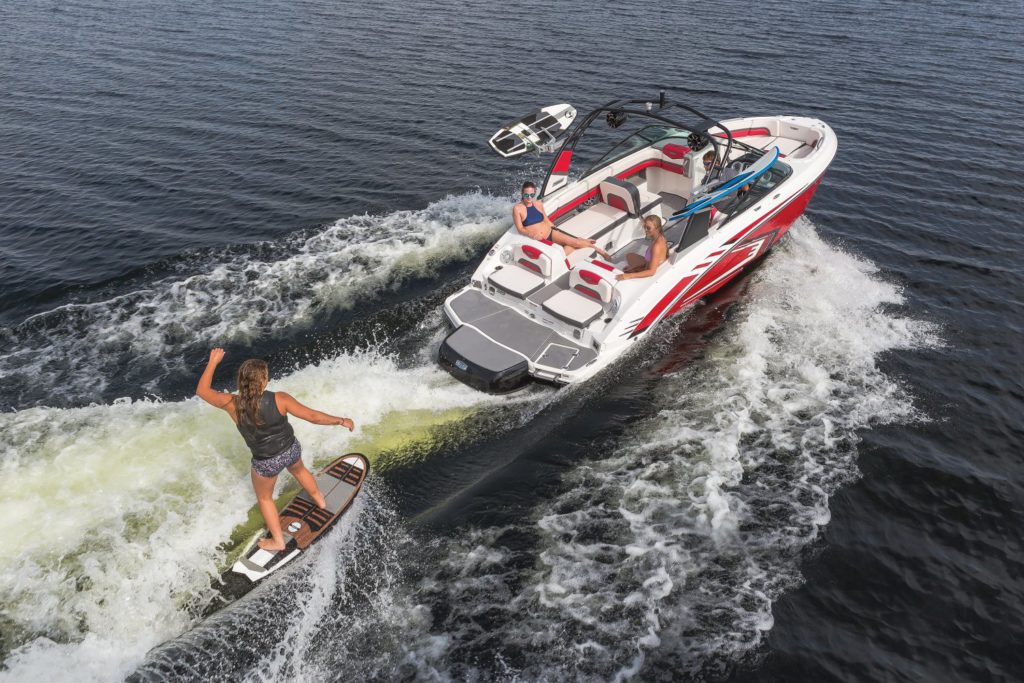
Disadvantages of Jet Boats
Every type of boat has it’s own advantages and disadvantages, and a jet boat is no exception to that. Here are a few things that could possibly be considered disadvantages to some people.
Fuel Consumption:
The motors in modern day jet boats tend to run at higher RPMs than their stern drive counterparts. This can potentially make them less efficient. We are hesitant to label all jet boats this way though. Many different things go into fuel economy than just RPM numbers. One top manufacturer told us that in their 24’ jet boat the difference was marginal, around 6-8% more usage. And this is comparing a single engine 300hp stern drive to a twin engine, 500hp jet boat. So check with the manufacturer of the boat you are buying to get more info on this.
Noise:
This goes hand-in-hand with the fuel consumption topic and for the same reason: Higher RPMs. There isn’t much debate that these motors are going to be nosier than their stern drive counterparts. However, that doesn’t mean it is noisier for the boat passengers. The key is to stop that noise before it can escape the engine compartment. Chaparral for example, has done some significant things to reduce noise in their jet boats and it has worked wonderfully. It is to the point that you can’t tell much difference in the noise level. The main difference is in the type of noise. Motors in jet boats tend to be a higher pitched noise where stern drives are a lower, deeper noise. Again, don’t let this one slow you down if you are looking at jet boats.

Maneuverability*
You will notice we put an asterisk by this one because this DOES NOT APPLY TO ALL JET BOATS. We want to be clear about this. Not all jet boats use the same system for turning. Some jet boats are bad at turning, specifically in reverse. REALLY BAD. But other brands of jet boats are not. In fact, they are really good. Maybe even better than stern drives. So what we are saying is do your research. Get a test drive. If you looking for a good place to start, check out Chaparral’s Vortex Jet Boats. These are some of the most advanced, well designed jet boats ever made. And lets just say that turning ability is NOT a problem!
Summary
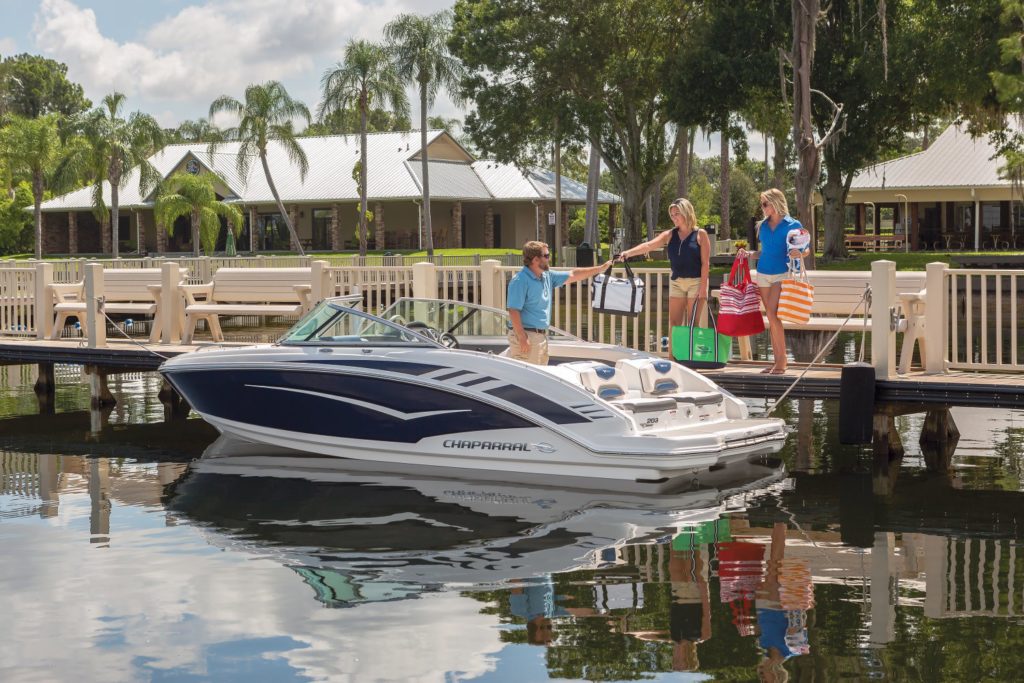
There are lots of other factors that make jet boats different from stern drives. We have only covered the big ones that might actually be deciding factors for you. If jet boats don’t sound quite like your cup of tea, you might want to go back to our article on helping you choose the right type of boat here. Jet boats are one of the quickest growing segments in the industry. There is clearly a good reason for that. So before you go out and buy a stern drive because that’s what you have grown up using your whole life, do yourself a favor and check out the new jet boat models. You will be glad you did.

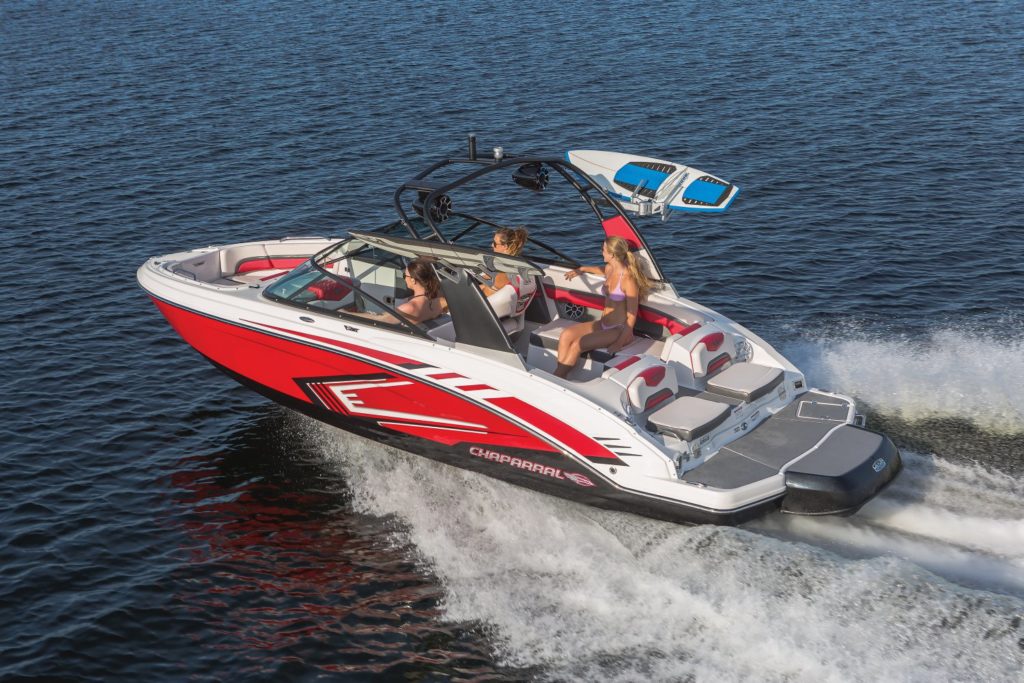
A few years ago, we owned 2 jet skis and would often have issues with the engine sucking up rocks in shallow waters and/or sucking up the ski rope. For these reasons, we upgraded to an inboard MerCruiser ski boat. I am surprised that this is not listed as one of your disadvantages, as this was the sole reason we sold the jet skis. We hope to hear comments from you on this…..
Hi Francis – you bring up a good point. Sucking up a ski rope is certainly something that can cause problems with any jet boats. Our perspective on this is that sucking a rope up will create issues with nearly any type of propulsion (including stern drives and inboards), so we don’t consider that to be a disadvantage exclusive to jet boats. Thanks for pointing this out!
Many modern small runabouts are jet boats, and they have both advantages and disadvantages when compared to boats with propellers. How do you know which to choose?